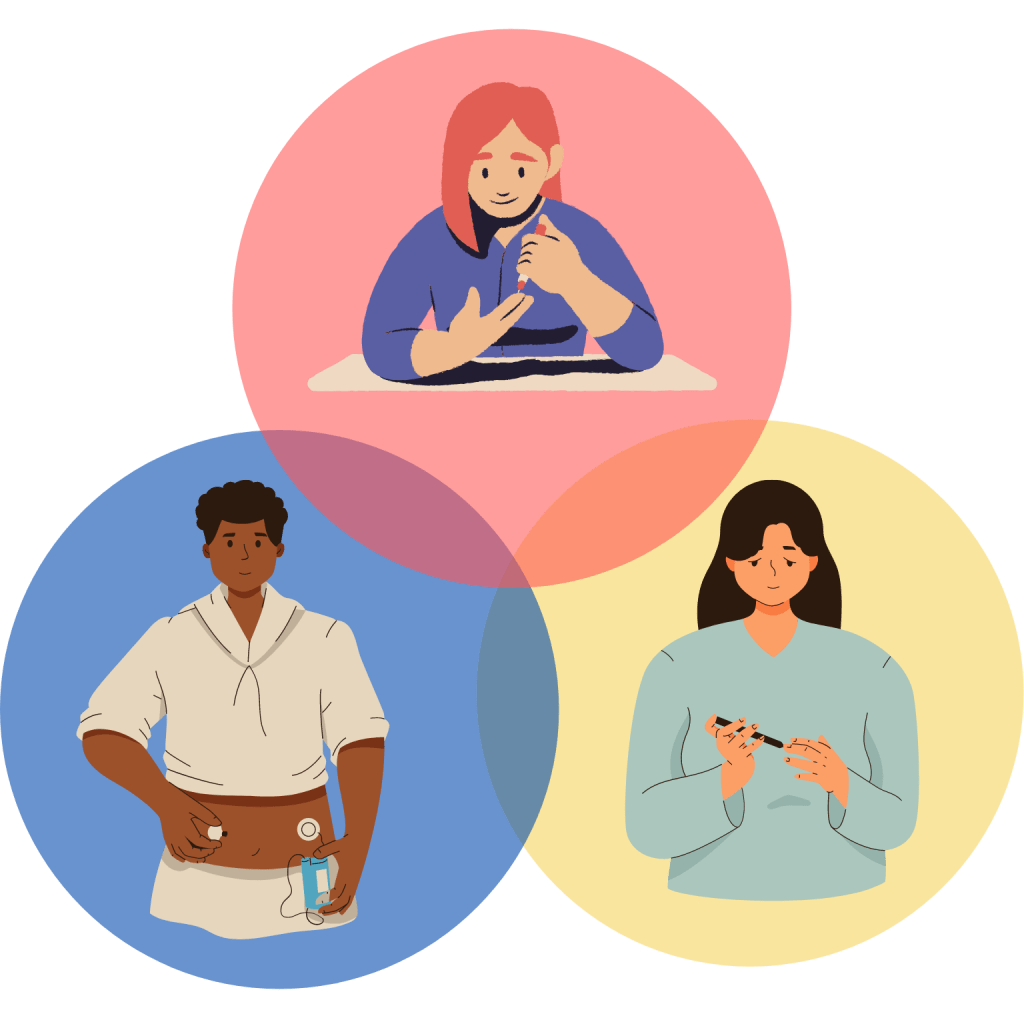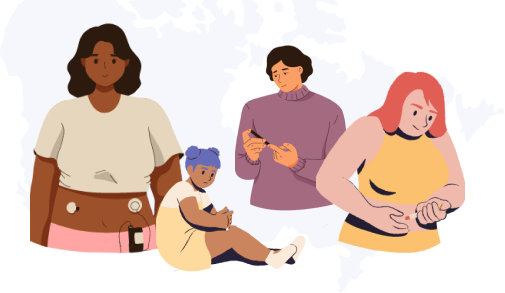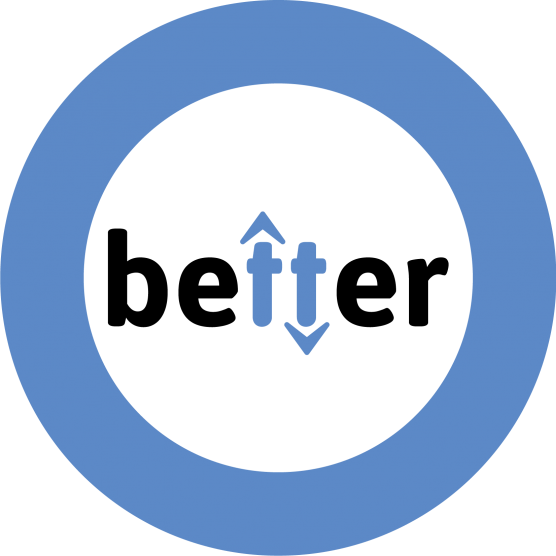Most people with type 1 diabetes (T1D) have their sleep interrupted by their diabetes at some point, due to symptoms of low or high blood sugar, alarms on their insulin pump or continuous glucose monitor (CGM), capillary blood measurements, etc.
Aside from these nearly universal problems, have you had episodes of poor sleep that had no apparent relation with your blood sugar levels?
Restless legs syndrome
Restless legs syndrome is estimated to affect 7% to 10% of the population, with a higher prevalence among people with diabetes. This syndrome can sometimes be related to a nerve impairment in the feet and legs called diabetic neuropathy, which generally occurs when blood sugar levels remain above target over an extended period.
People with this syndrome experience discomfort or pain in one or both legs when trying to sleep. This discomfort is relieved only by movement, which makes it hard to fall asleep. Symptoms can manifest occasionally or every day.
Restless legs syndrome is not exclusive to T1D and can have several other causes. If you believe you have this condition, there are non-medicinal methods that can help to relieve symptoms, like a massage or a warm bath to relax your legs before going to bed. An iron deficiency can also cause these symptoms; a blood test may be needed to diagnose this problem, which requires taking supplements.
Sleep apnea
Obstructive sleep apnea is characterized by periods of interrupted breathing at night. The throat muscles relax so much that they block the inflow of air into the lungs. This forces the brain to wake up to allow breathing to restart. This wake-up period is usually too short for the individual to remember it, which leads to unrestful nights because sleep is less deep.
Sleep apnea is often associated with excess weight, but we know that people with T1D without excess weight are still very likely to develop this condition. Some studies report that up to 30% to 50% of adults with T1D have sleep apnea. This condition often remains undetected. Please talk to a healthcare professional if you have one or several of the main symptoms of sleep apnea, which include: snoring, episodes of sudden waking with a sensation of strangling, significant nighttime sweating, significant daytime fatigue, difficulty concentrating, headaches (especially upon waking), frequent daytime drowsiness, decreased libido, or breathing interruptions observed by a loved one during your sleep.
General tips for a good night’s sleep
Having a good sleep hygiene can sometimes be enough to ensure you get restful sleep at night. Follow these tips:
- Avoid caffeine in the afternoon or evening. Your body needs 3 to 5 hours to eliminate half a cup of coffee.
- Adopt a nighttime routine and avoid exposure to screens (cell phone, TV, computer, etc.) a few hours before bed. Reading is a good way to relax before bed.
- Make your environment sleep-inducing by eliminating light and distracting noises from your bedroom.
- Keep a regular sleep schedule.
With regard to T1D more specifically, you can follow these tips to properly manage your blood sugar levels at night:
- Set alarms on your CGM based on your medical condition and your tolerance to alarms.
- Regularly check the blood sugar curves on your CGM (or measure your blood sugar at around 2 a.m. from time to time) to adjust your basal insulin or the basal rate of your pump.
- Limit the administration of insulin to correct blood sugar in the evening and use prudent correction boluses.
- Note that the risk of nighttime hypoglycemia is higher in some circumstances, including after physical activity or after drinking a significant amount of alcohol.

The BETTER Registry is a kind of census of people living with type 1 diabetes in Quebec. It now has more than 2000 participant. This registry aims, among other things, to evaluate the quality of sleep of people living with type 1 diabetes.
Not yet registered?
Références
- Kalra, S., Gupta, A. Diabetic Painful Neuropathy and Restless Legs Syndrome in Diabetes. Diabetes Ther 9, 441–447 (2018). https://doi.org/10.1007/s13300-018-0376-6
- How can type 1 diabetes affect sleep? Beyond Type 1. (2020, September 15). https://beyondtype1.org/how-can-type-1-diabetes-affect-sleep/
- Mayo Foundation for Medical Education and Research. (2021, July 27). Obstructive sleep apnea. Mayo Clinic. https://www.mayoclinic.org/diseases-conditions/obstructive-sleep-apnea/symptoms-causes/syc-20352090.
- Reutrakul, S., Thakkinstian, A., Anothaisintawee, T., Chontong, S., Borel, A.-L., Perfect, M. M., Janovsky, C. C., Kessler, R., Schultes, B., Harsch, I. A., van Dijk, M., Bouhassira, D., Matejko, B., Lipton, R. B., Suwannalai, P., Chirakalwasan, N., Schober, A.-K., & Knutson, K. L. (2016). Sleep characteristics in type 1 diabetes and associations with glycemic
Participate in the BETTER registry!

First registry of people living with T1D in Canada.
Learn More



